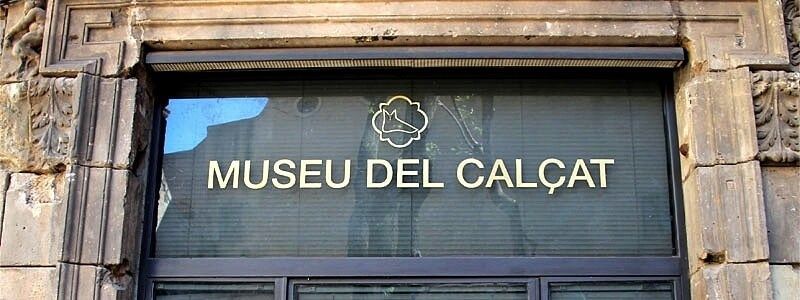
Updated May 31 2023
The Footwear Museum, whose original Catalan name is Museu del Calçat, is one of those small museums in Barcelona that often goes unnoticed, and it can be found in the most beautiful and historic enclaves of the city, the Plaça de Sant Felip Neri.
Since November 2015 the museum is closed in search of a new location to expose its collection.
Highlights
The Footwear Museum is run by an institution that dates back over 8 centuries, the original Cofradia de San Marcos Evangelista, which is the oldest Brotherhood of St Mark the Evangelist in Europe. This became the Shoemakers’ Guild, and then returned to take the current Brotherhood of St Mark name, after the patron saint of shoes. Such was the importance of the Brotherhood that it gained permission to have an altar in one of Barcelona Cathedral’s chapels, which still exists today.

The building in which the Footwear Museum is situated is a small Renaissance palace dating back to the 16th century, that was originally on Calle Corríbia and that was moved brick by brick to its current location in Plaça de Sant Felip Neri in 1950. If you look carefully you can see some cobble stones on its façade. Originating from the neighbouring Plaça de Sant Jaume they were used to hide the damage to the façade of the building, caused by the bombings during the Spanish Civil War.
The Barcelona Footwear Museum Collection
In spite of being a very small museum, with just two rooms, 2000 years of history are covered by it, with shoes from different periods and styles. The oldest examples that are exhibited, which date from the Roman era to the 17th century, are true reproductions that have been based on documentation from the period itself, whilst the rest of the shoes that you will see are originals.
Some of the highlights that you’ll see in the Footwear Museum are the reproductions of the sandals from the Roman era, used by the common villagers, shepherds and slaves of the Roman empire, as well as clogs, pumps, silk shoes, embroidered shoes, oriental slippers, military boots, riding boots, boots for musketeers, and those in the style of Luis XIV and Luis XV amongst others.

Depending on the amount of time you want to spend looking at each shoe in the exhibition, your visit to the Footwear Museum could last anything from 10 or 15 minutes to 45 minutes.
In addition, a glass cabinet has been installed that displays shoes worn by various well-known personalities, such as those of the Ex-President of the Catalan Government Jordi Pujol, the famous Catalan cellist and conductor Pau Casals, the clown Charlie Rivel and even some boots that have been worn to climb Mount Everest, that are capable of withstanding temperatures as low as -40ºC. The exhibition of all these types of shoes is complemented by typical machinery and tools used for the manufacture of hand-made shoes, as well as a display of the different types of leather used for shoe-making, and portraits of some of the of Society’s notable figures.
We recommend that if you have any questions throughout your visit, about any of the shoes or tools that you see, don’t hesitate to ask one of the museum’s staff, who will be happy to help you.
Located in the small main entrance, you’ll find two of the strangest exhibits of the museum, notably a giant wooden shoe tree, which was especially made as a mould for the feet of the statue of Christopher Columbus, and also a shoe that was made from this mould, that at 1.22 metres in length holds the Guinness World Record for the biggest shoe in the world.
Photo gallery
Map
Address
plaça (square) de Sant Felip Neri 5, Barcelona
Opening hours
Tuesdays to Sundays and public holidays: from 11:00 to 14:00.
Closed: Mondays.
Cost of Entry
General admission: €2.50.
Concessions: €2 for groups of 10 people or more.
Free entry: for children aged 11 and under.
How to get there
Metro: Catalunya (line 1 and 3), Liceu (line 3) and Jaume I (line 4).
FGC and Renfe: Catalunya.
Buses: lines 14, 17, 19, 40, 45, 59, 91 and tourist bus.
By foot: Right in the heart of the city centre, you can arrive on foot by walking from any nearby area.
Nearby places of interest
Barcelona Cathedral
Palau de la Generalitat
La Rambla in Barcelona
Frederic Marès Museum
Barcelona’s City Hall




